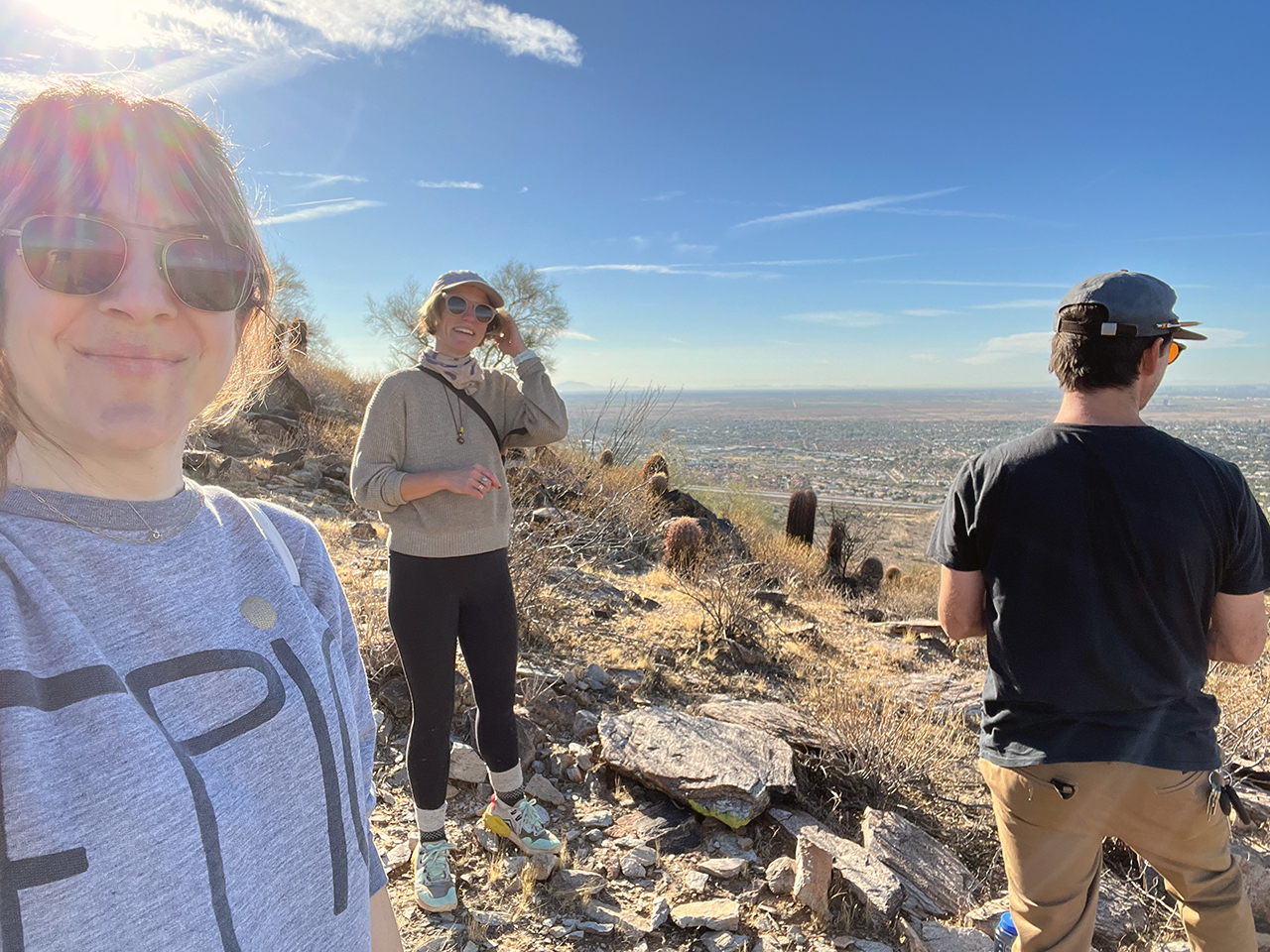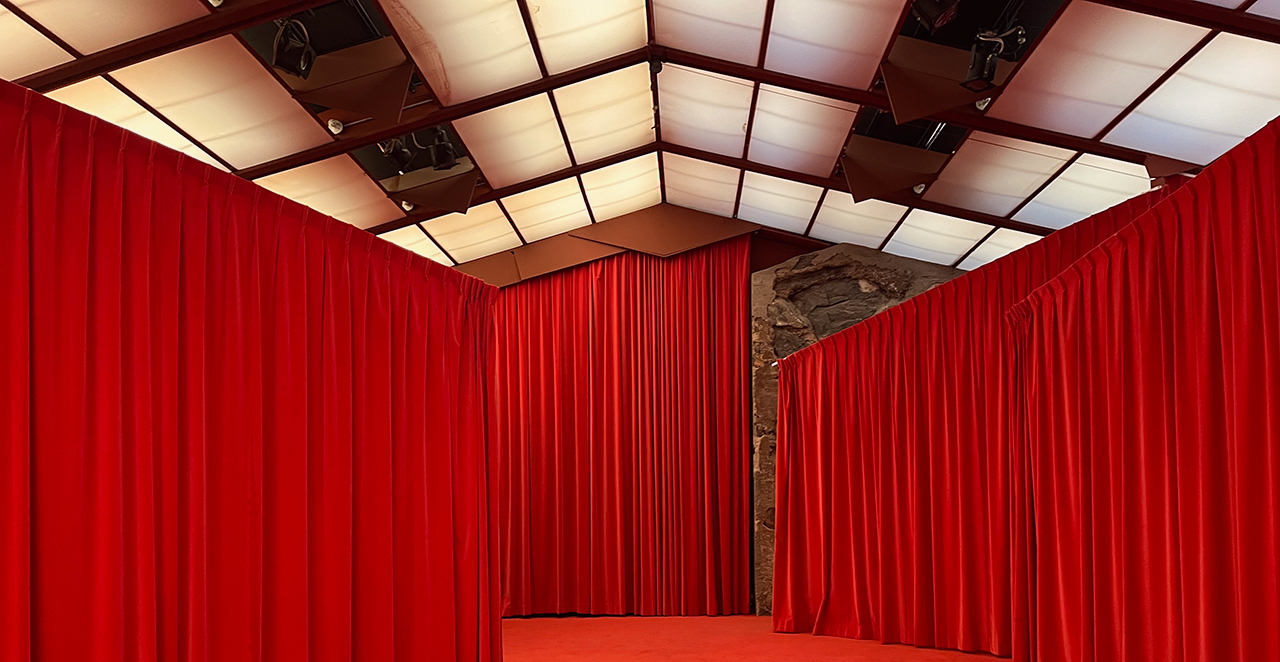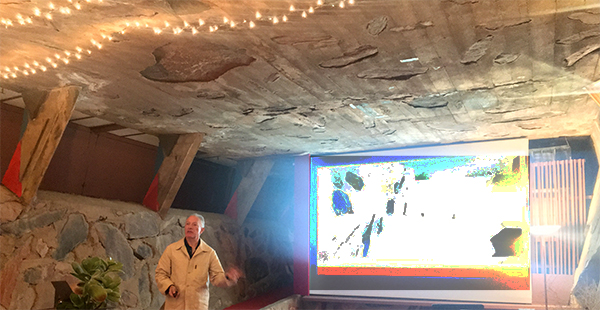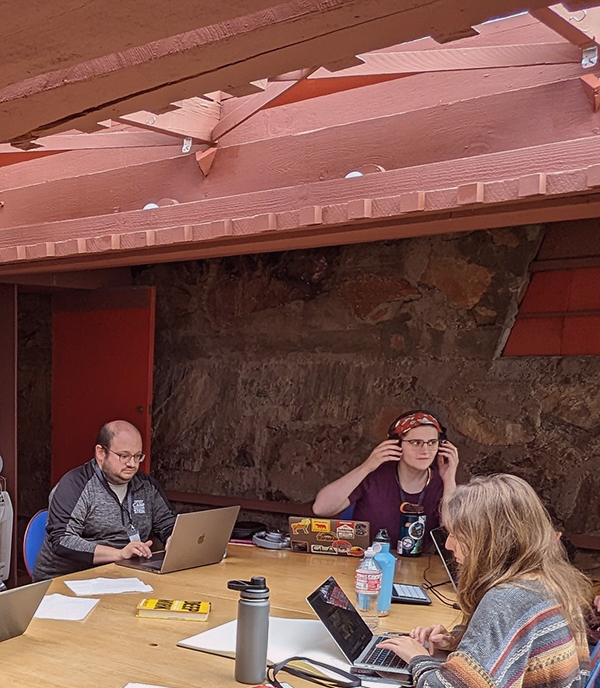Our Strategic Initiative connecting Humanities Research with Architecture through the enduring legacy of Frank Lloyd Wright
The Frank Lloyd Wright Foundation and Taliesin West, the winter home, present-day UNESCO World Heritage Site, and former studio of the renowned American modernist architect Frank Lloyd Wright, have entered into a collaborative partnership with the Humanities Institute to run collaborative programming, on-site teaching for ASU students and micro-residencies for ASU faculty.
"In Conversation": The HI at Taliesin West lecture series
Home and hearth form the basis of the stories we tell and the worlds we create.
HI lectures at Taliesin West explore the role of architecture and the built environment in structuring our relations with nature, animals and culture, the future of design and more.
Talks to date have been given by Sir Jonathan Bate on "Arcadia" and Ron Broglio on nonhuman architecture.
The lectures hold important space for how work in the humanities can meet with Phoenix's broad and high-level public interest in architecture and design.
All events as part of this exciting series take place in the vaunted "Cabaret Theater" of Wright's former school.
Next talk:
Thursday, Apr. 24, 2024, 6 to 7 p.m. ∣ Adam Nocek, "The Shaping Impact of Architecture and Design," Cabaret Ballroom, Taliesin West, Purchase tickets through Frank Lloyd Wright Foundation (discounts available for students and members)
Teaching at Taliesin West
In community with our partners at Taliesin West, HI is pleased to provide ASU humanities and arts faculty and students access to the extraordinarily rich research-driven pedagogical experience of learning at Wright's former architecture school.
This autumn, students in Dr. Serena Ferrando's "ITA: 492 Noisemakers!" class visited for “Charting the Desert Soundscape: Creating Digital Maps of Taliesin West’s Auditory Geographies."
The students spent two days and one night at Taliesin West engaging in field research, experiential learning, collaborative work, and the collection of audio material and data to create digital maps of the sound- and noisescapes of Frank Lloyd Wright’s architectural masterpiece. Geographical Information Systems such as ArcGIS Story Maps and the MaxMSP digital platform were two of the digital mapping platforms of choice. The field trip also comprised a soundwalk (an excursion whose main purpose is listening to the environment), brainstorming sessions, and a workshop on digital mapping technologies so that the students could share their work in real time with each other and the ASU and Taliesin West community. Dr. Rodrigo Meirelles of the ASU MIX Center delivered a guest lecture on Immersive Sound Technology.
Taliesin West Micro-Residencies for Humanities and Arts Faculty
Both Taliesin West and the Frank Lloyd Wright Foundation offer unparalleled spaces, collections and archival resources that, in the architect's own words, inspire us “to make life more beautiful, the world a better one for living in, and to give reason, rhyme, and meaning to life.”
In service to this spirit of critical and creative engagement so central to Wright's work and legacy, HI is pleased to offer micro-residencies for ASU humanities and arts faculty to enjoy several days staying at Taliesin West while working on a project.
The first such micro-residency was completed by ASU School of Art faculty Erika Hanson and Future Retrieval, the artist collective comprised of Katie Parker and Guy Michael Davis, in December 2023.
The artists spent a week at Taliesin West working with staff, leadership and collections. Together, they made extensive use of the Foundation's extensive library holdings to research architecture, land and water rights, local resources, furniture and design and instructionals on building. Staff introduced the group to the vast collections of both Frank Lloyd Wright and his his fellows which includes textiles, ceramics, japanese prints, screens, and art made on site. Having access to explore and move through the main residence as well as the large array of shelters built on site gave Hanson and Future Retrieval a larger picture of how land, art, and architecture played a central role in everyday life.




